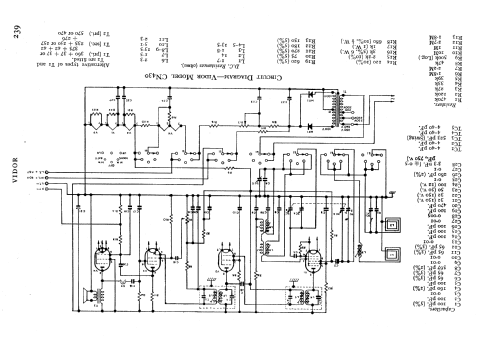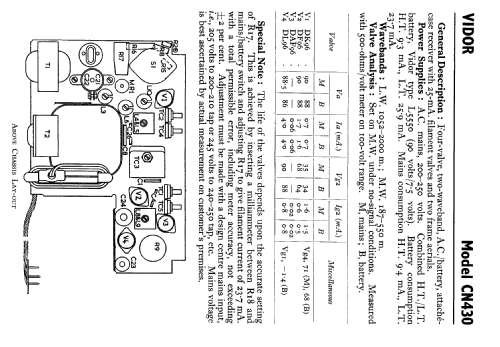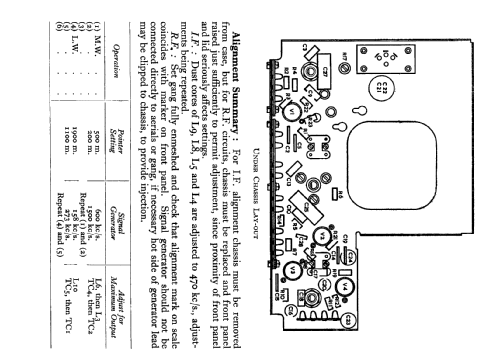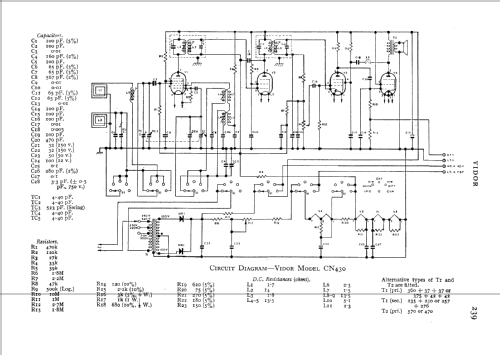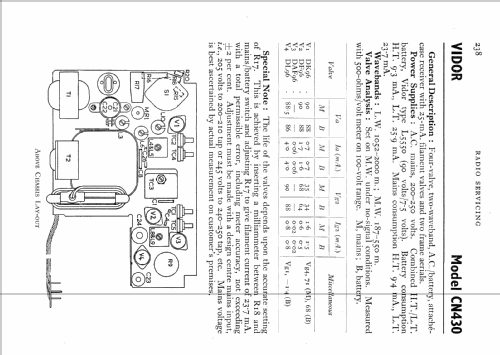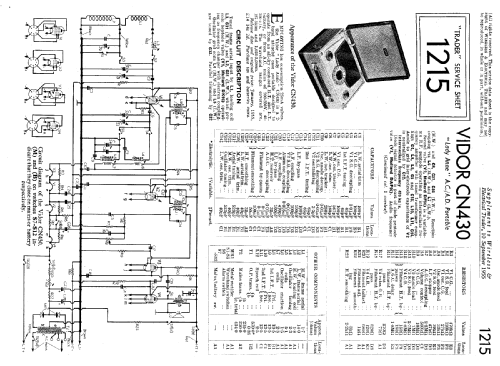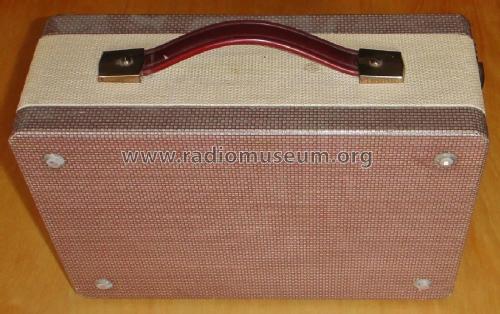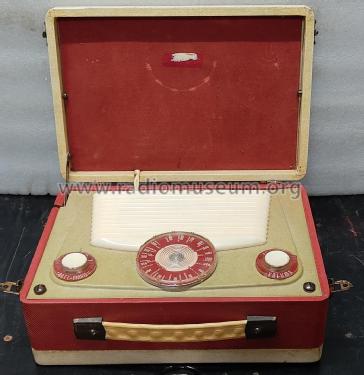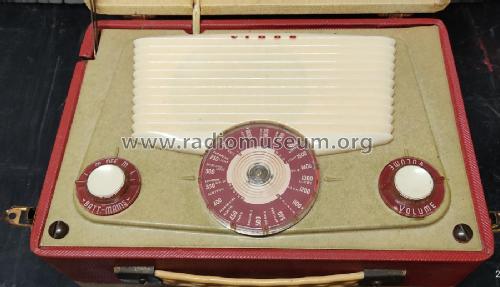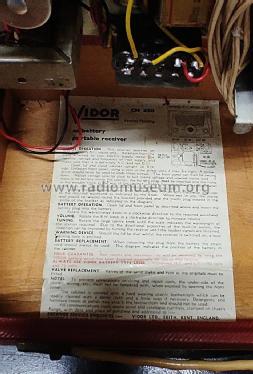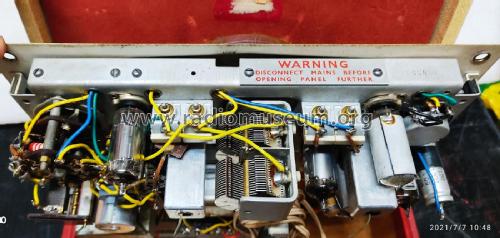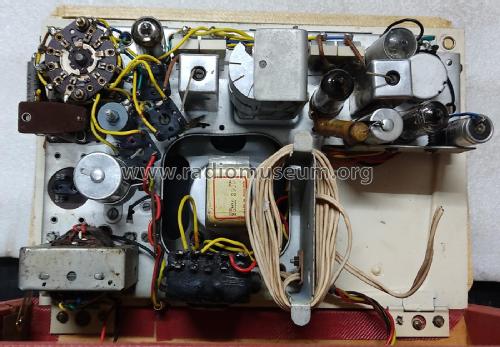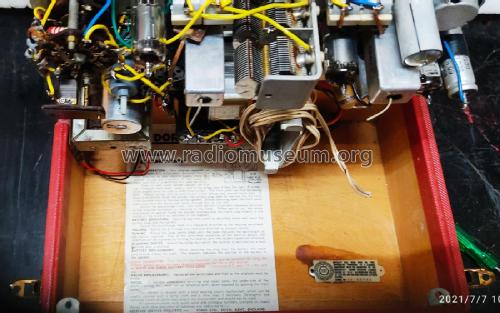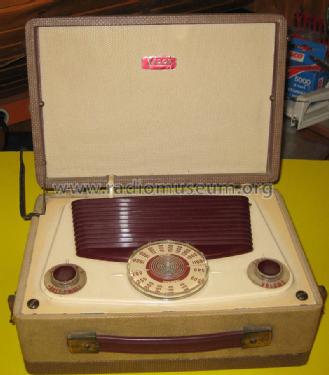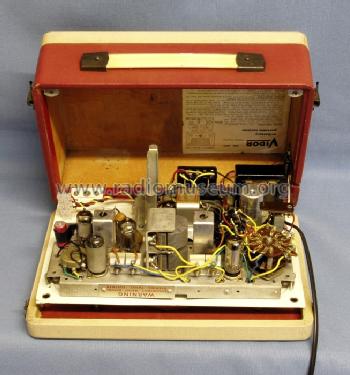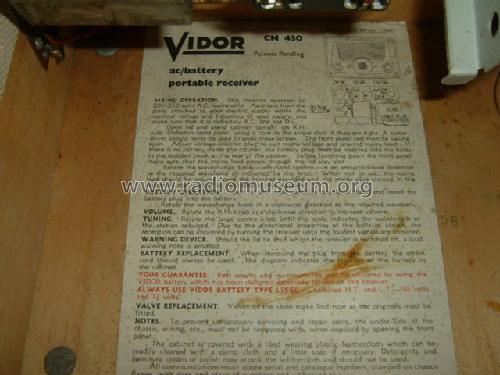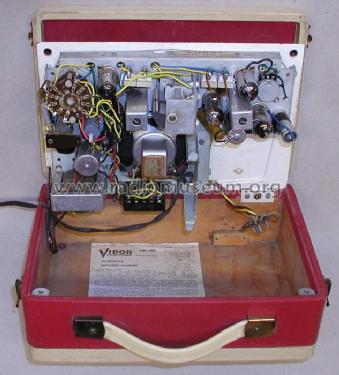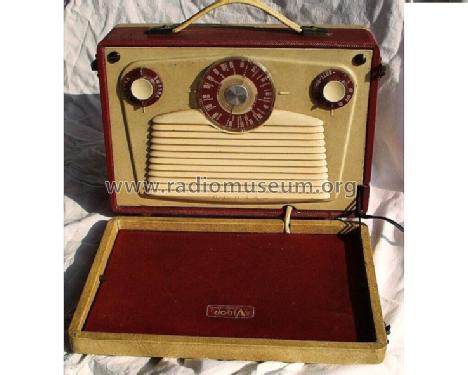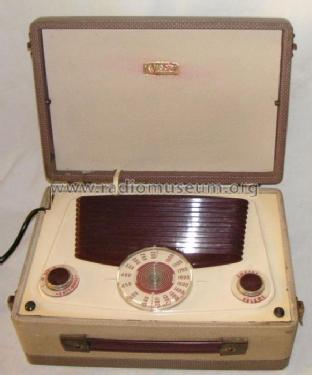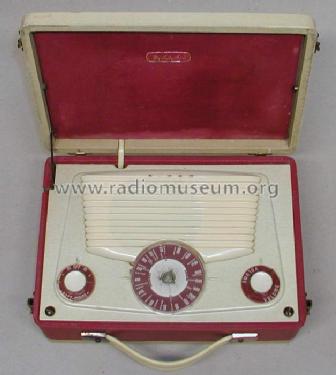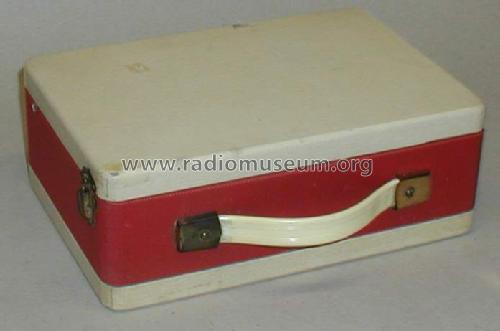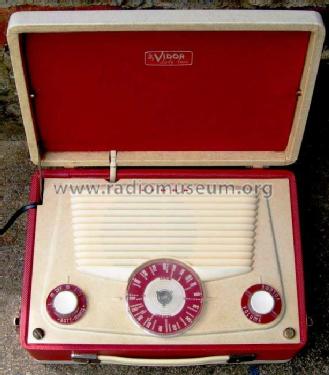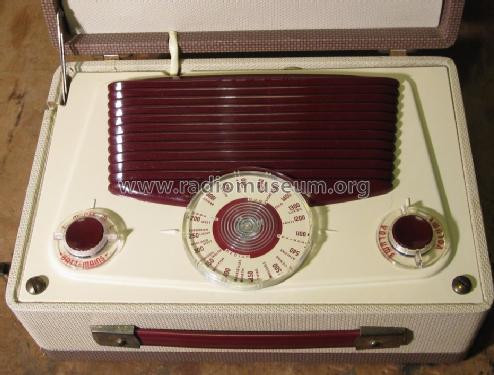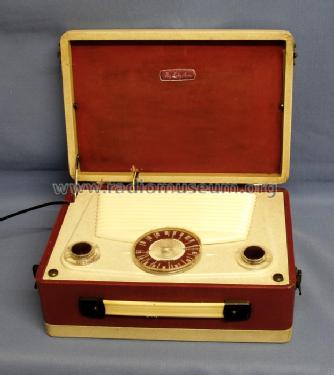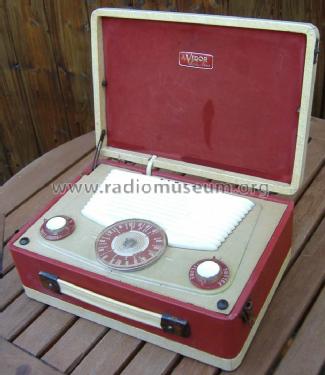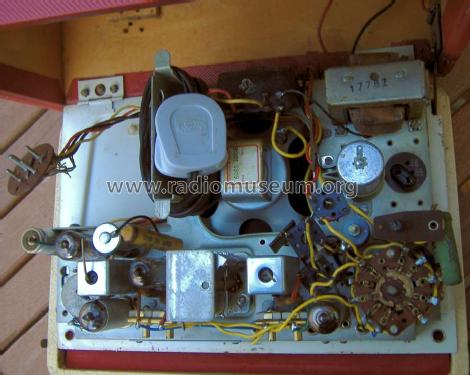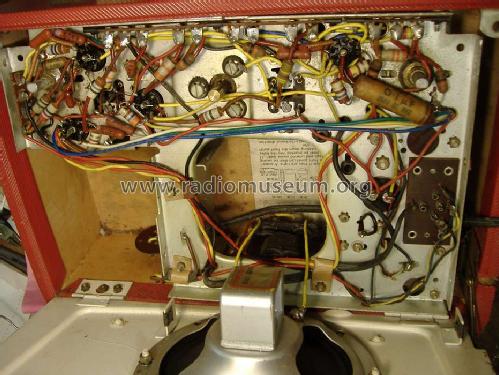My Lady Anne CN430
Vidor Ltd.; Erith (Kent)
- Produttore / Marca
- Vidor Ltd.; Erith (Kent)
- Anno
- 1955
- Categoria
- Radio (o sintonizzatore del dopoguerra WW2)
- Radiomuseum.org ID
- 74815
Clicca sulla miniatura dello schema per richiederlo come documento gratuito.
- Numero di tubi
- 4
- Principio generale
- Supereterodina (in generale)
- N. di circuiti accordati
- 6 Circuiti Mod. Amp. (AM)
- Gamme d'onda
- Onde medie (OM) e onde lunghe (OL).
- Tensioni di funzionamento
- Rete / Batterie (ogni tipo) / 200-250 or 7.5 & 90 Volt
- Altoparlante
- AP magnetodinamico (magnete permanente e bobina mobile)
- Materiali
- Pelle / stoffa / plastica ma con altro materiale sottostante
- Radiomuseum.org
- Modello: My Lady Anne CN430 - Vidor Ltd.; Erith Kent
- Forma
- Apparecchio portatile > 20 cm (senza la necessità di una rete)
- Dimensioni (LxAxP)
- 290 x 118 x 200 mm / 11.4 x 4.6 x 7.9 inch
- Annotazioni
-
Im Deckel eingebaute Rahmenantenne./ Frame aerial in the lid.
Earlier official Vidor L5546 battery using "W" connector is slightly different in size (3" x 3.5" x 3.5") to Vidor L5550 /Ever Ready B148 (2.75" x 3.5" x 3.5") But GEC does suggest the BB548 (=B148 & L5550). Later models do list Vidor battery L5550 in case.
Space to wind mains flex.
Lid switch "howls" to remind you rather than switching off power.
The tuning knob has a screw clamp under the chassis plate, accessible from front edge, but the other knobs are "push on" (lever from under side to avoid breakage).
Metal Rectifier and Isolated mains transformer but resistive dropper from HT for LT.
- Peso netto
- 3.5 kg / 7 lb 11.3 oz (7.709 lb)
- Prezzo nel primo anno
- 14.00 £
- Letteratura / Schemi (1)
- Trader Service Sheet (suppl. of Wireless & El. Trader, etc.) (Nr. 1215, 10 September 1955)
- Letteratura / Schemi (2)
- Radio And Television Servicing books (R&TVS) (Pages 238-240)
- Autore
- Modello inviato da Bernd P. Kieck. Utilizzare "Proponi modifica" per inviare ulteriori dati.
- Altri modelli
-
In questo link sono elencati 146 modelli, di cui 79 con immagini e 75 con schemi.
Elenco delle radio e altri apparecchi della Vidor Ltd.; Erith (Kent)
Collezioni
Il modello My Lady Anne fa parte delle collezioni dei seguenti membri.
Discussioni nel forum su questo modello: Vidor Ltd.; Erith: My Lady Anne CN430
Argomenti: 1 | Articoli: 1
habe gerade ein solches Gerät repariert.
Der AÜ ein EI42 war defekt. Es läßt sich ohne Probleme ein beschaffbarer M42 einbauen.
Noch ein Tipp. Die Knöpfe lassen sich leicht entfernen, wenn ein langer Schraubenzieher unter
dem Chassis mit drückt.
Der Senderknopf ist mit einer Schelle auf der Drehkoachse festgeschraubt, die Schraube
erreicht man unterhalb des Chassis durch eine Öffnung.
Die wieder erreichte Leistung des Radios ist erstaunlich.
Gruß Klaus
Klaus Bayer, 16.Jun.06
